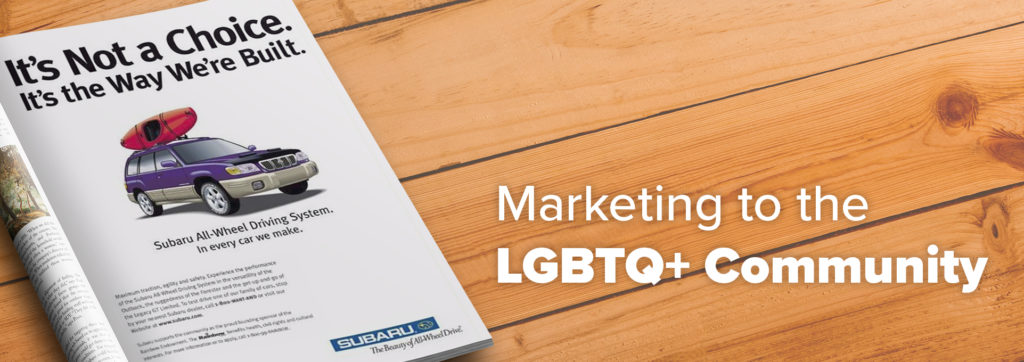Marketing to The LGBTQ+ Community

June is Pride Month, which was declared by former President Clinton in 1999 – but it took a while to flourish. Today, it’s grown into a much broader celebration of the LGBTQ+ community and it’s more recently become a month when marketers and advertisers use “rainbow branding” and have made strides in spotlighting LGBTQ+ people in their ads. With spending power of $3.7 trillion globally, the LGBTQ+ community is a growing economic force and brands should take notice.
Progress toward a more inclusive marketing narrative has been made over the past, but often brands are uncertain about how to best keep up with rapid social changes or how to inclusively represent their consumer base. LQBTQ+ representation in advertising only goes back to the 1980s, when brands began reflecting the broader changes in our society. IKEA was the first marketer to feature a gay couple in a TV ad — in 1994. The primetime ad focused on the relationship of the main characters – a single thread of IKEA’s broader communication message – that showed an American gay couple as everyday people shopping for furniture. The spot received praise, but also backlash, including a bomb threat to a store.
Also in the 1990s, Subaru had become popular with gay women so they ran a campaign with messaging like “Get Out and Stay Out” and “It’s Not a Choice. It’s The Way We’re Built” and images of cheeky license plates saying “XENA LVR” and “P-TOWN.” Straight audiences didn’t notice the license plates — but according to market research, gay women appreciated the subtle messages and became brand advocates. Chevrolet, a quintessential all-American brand, released a similar casted campaign in 2022, more than 25 years later, that was a clear nod to the off-the-beaten-advertising-path Subaru took.
While these brands were not the first to create ads for LGBTQ+ consumers, they reached the audience with consistency and transparency. Brands that engage in “rainbow washing” during June can find themselves under scrutiny if they only participate once a year and don’t demonstrate their support of the LGBTQ+ community the rest of the year. Marketing will always reflect society and societal changes — including the current move towards a more diversified representation in advertising.
Brands that speak to the LGBTQ+ community are not simply taking advantage of a “new and emerging market,” but are demonstrating a longer term commitment to inclusivity. With more than 70% of consumers expecting companies to be socially responsible and support the causes they care about, consumers are looking for true authenticity, ongoing action, advocacy, and inclusion from brands — and will reward brands with fierce loyalty.
—
Looking for bold answers to your advertising questions? Get in touch with Madison+Main today to get the creative marketing solutions your business has been seeking by calling us at (877) 623-6246! #BoldBrandsWin